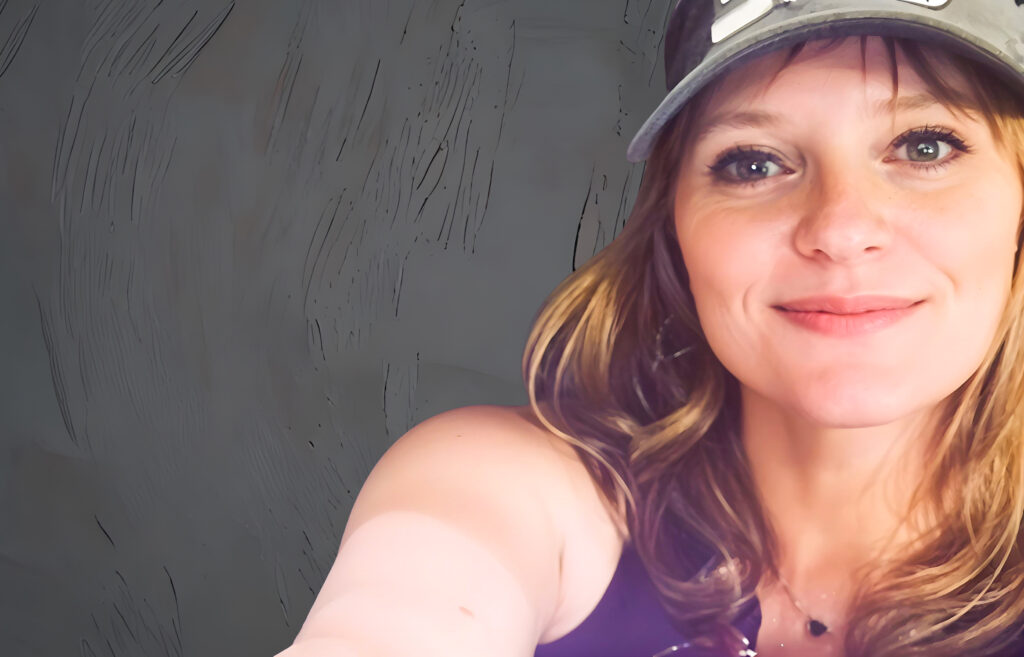Fran Candelera is a visionary artist and innovator who has seamlessly blended the worlds of art and technology to create a unique genre of digital storytelling. Known for his interactive installations, he redefines how we experience art by engaging viewers in ways that are both deeply immersive and intellectually stimulating. His work stands at the intersection of art, technology, and audience participation, challenging traditional notions of authorship and creativity. Over the years, Candelera’s career has flourished due to his ability to embrace new technologies while pushing the boundaries of artistic expression.
Candelera’s rise to prominence was marked by his early embrace of digital tools that allowed for dynamic, interactive art forms. He frequently collaborates with engineers, scientists, and other experts to create art that is not only aesthetically pleasing but also technologically groundbreaking. His works have been featured in major exhibitions worldwide, and his influence continues to grow as more artists experiment with the fusion of digital mediums and traditional art.
Table of Contents
Quick Information
| Category | Details |
|---|---|
| Profession | Digital artist and innovator |
| Art Style | Interactive, technology-based art (AI, VR, data-driven installations) |
| Main Themes | Collaboration, audience participation, human-technology relationship |
| Key Achievements | Known for installations like The Observer’s Mind; pioneer in integrating AI and data into visual art |
| Influences | Technology, artificial intelligence, data science, human-machine interaction |
| Controversies | Debate over authorship in digital and interactive art; challenges with keeping up with tech advancements |
| Legacy | Influenced new generation of digital and interactive artists; opened the door for tech-art collaboration |
| Current Focus | Expanding interactive experiences using AI, virtual reality, and real-time data |
| Collaborations | Works with scientists, engineers, and technologists to push the boundaries of digital creativity |
| Notable Exhibitions | International exhibitions showcasing his interactive and tech-driven installations |
Fran Candelera’s Artistic Philosophy and Style
At the core of Fran Candelera’s work is a deep commitment to innovation and collaboration. His artistic philosophy is centered around the idea that art should not exist in isolation, but rather engage actively with the world, incorporating technology and audience interaction. Candelera believes that true creativity comes from breaking traditional boundaries, whether those be between different mediums, artistic disciplines, or even between the artist and the audience. He often emphasizes the importance of creating works that challenge the viewer, not only to observe but also to participate in the creation of meaning.
One of the most notable elements of Candelera’s style is his integration of technology into his art. He views technology not as a tool but as a medium in itself, capable of expressing ideas in ways that traditional art forms cannot. This is why many of his projects involve cutting-edge digital platforms, such as artificial intelligence (AI), augmented reality (AR), and data visualization. Candelera’s work often places the viewer at the center, making them an active participant in the piece. In this way, Candelera’s art invites each observer to interact with the work, creating unique experiences and interpretations based on individual engagement.
Major Works and Achievements
Fran Candelera’s most notable works are characterized by their ability to engage viewers in dynamic ways, encouraging participation that is not merely physical but intellectual. His interactive installations have become famous for challenging the idea of who the true creator is—the artist who sets the parameters or the audience who brings the piece to life through their engagement. This concept of shared authorship has been a consistent theme in many of Candelera’s most celebrated projects.
One of his most significant achievements was his large-scale installation, The Observer’s Mind, which used AI to track the movements and choices of participants, ultimately influencing how the art evolved in real-time. This groundbreaking work was exhibited in some of the world’s leading galleries and received critical acclaim for its exploration of human-machine interaction. Other major works include his virtual reality (VR) installations, which blend immersive storytelling with digital landscapes, allowing users to traverse and shape virtual worlds in a way that mimics real-life exploration. These projects have established Candelera as a leading figure in the realm of digital and interactive art, bridging the gap between traditional artistic expression and modern technological possibilities.
The Role of Technology in Fran Candelera’s Work
Technology plays a crucial role in Fran Candelera’s creative process, not just as a tool for producing his art, but as a central theme in his work. He explores how digital platforms, algorithms, and artificial intelligence can transform art into something interactive and ever-evolving. His use of technology allows him to create pieces that are not static but change and adapt based on audience interaction. In this way, Candelera’s work often blurs the lines between the artist, the observer, and the artwork itself.
One of the key technological aspects of his art is the use of AI to alter and generate artistic elements based on audience input. In many of his installations, the art evolves depending on the choices made by the participants. This challenges the traditional notion of the artist as the sole creator and opens up new possibilities for how we think about authorship in art. Candelera’s use of technology goes beyond mere novelty; it speaks to the broader cultural and philosophical questions about how technology is reshaping our relationship with creativity and agency.
Challenges and Controversies
Despite his success, Fran Candelera has faced significant challenges and controversies throughout his career. One of the major controversies surrounding his work has been the debate over authorship in digital art. Since many of Candelera’s pieces rely on audience interaction to take shape, critics have questioned whether the artist can truly claim ownership of the final product. This debate is particularly relevant in the context of digital reproduction, where works can be easily copied, shared, and altered without the artist’s involvement.
Another challenge Candelera has faced is keeping up with the rapid pace of technological advancement. As new tools and platforms emerge, he must continually adapt his approach to remain at the cutting edge of digital art. This has led to both technical difficulties and mixed responses from audiences and critics, especially when some of his projects were seen as too ahead of their time. Nevertheless, Candelera welcomes these challenges, viewing them as an essential part of the evolving relationship between art, technology, and society.

The Impact of Audience Participation in Fran Candelera’s Art
One of the most revolutionary aspects of Fran Candelera’s work is the way he incorporates audience participation into his art. Unlike traditional art, where viewers passively observe a completed piece, Candelera’s work requires active engagement from the audience. His installations often rely on viewer interaction to shape the outcome, making each experience unique depending on the participant’s choices and actions. This approach transforms the audience from mere spectators into collaborators, directly influencing how the artwork evolves in real-time. This concept has reshaped how art is viewed, turning it into a more immersive and personal experience.
By involving the audience in this way, Candelera not only breaks down the barriers between artist and observer but also invites viewers to think about their role in the creative process. His art becomes a shared experience, highlighting the idea that creativity is not a solitary act. This interactivity adds a layer of unpredictability, as no two participants will experience the art in the same way. As a result, his installations are never truly finished, continually evolving based on audience involvement. This unique approach to viewer participation has cemented Candelera’s place as a leader in the realm of interactive and digital art.
The Use of Data and Algorithms in Fran Candelera’s Work
Fran Candelera’s art stands out for its innovative use of data and algorithms to create dynamic and interactive pieces. By leveraging technologies like AI and data visualization, he transforms raw data into visually stunning and thought-provoking works of art. His installations often pull in real-time data from various sources, whether it be social media trends, environmental data, or even the movements of the viewers themselves. This data is then processed by complex algorithms that manipulate elements of the artwork, creating a constantly shifting and evolving piece that is as fluid as the data it reflects.
What makes Candelera’s approach to data and algorithms particularly compelling is how it reflects broader societal themes. His work often touches on issues of privacy, surveillance, and the increasing role of technology in our lives, making the audience consider how data shapes their experiences both inside and outside the gallery. By turning impersonal data streams into something deeply personal and interactive, Candelera challenges traditional notions of what art can be and how it can reflect our world. His use of algorithms not only makes his art more engaging but also ties it to current debates about technology, identity, and control.
Fran Candelera’s Influence on Future Artists
Fran Candelera has left an indelible mark on a new generation of artists who are now pushing the boundaries of digital and interactive art. His pioneering work has opened up new avenues for how technology can be integrated into the creative process, influencing both art schools and contemporary artists who seek to merge traditional art with modern digital tools. Many young artists look to Candelera’s ability to combine storytelling with technology, using his methods as a blueprint for creating art that is immersive, participatory, and reflective of the digital age.
Moreover, Candelera’s emphasis on collaboration and interdisciplinary work has inspired other artists to explore partnerships with experts outside the art world, including scientists, engineers, and programmers. This blending of disciplines has become more common in the art world, with many galleries now showcasing works that involve cutting-edge technologies like virtual reality, augmented reality, and AI. Candelera’s impact can be seen in the increasing number of digital art exhibits worldwide, with artists continuing to build upon his legacy of using technology to create transformative, boundary-pushing art. His influence will likely continue to shape the future of contemporary art for years to come.
Fran Candelera’s Legacy and Influence on Contemporary Art
Fran Candelera’s legacy lies in his ability to push the boundaries of what art can be in the digital age. His pioneering work has not only influenced other artists but has also shaped how art institutions and galleries approach digital and interactive installations. More and more museums are embracing the fusion of art and technology, featuring exhibits that incorporate VR, AR, and AI, in part due to Candelera’s trailblazing efforts. His influence extends beyond the art world into education and research, where his work is used as a model for exploring the relationship between creativity and technology.
As technology continues to evolve, so too will Candelera’s impact on the art world. His interdisciplinary approach, which merges art with science and technology, has inspired a new generation of artists to explore interactive, immersive experiences. While his work often raises more questions than it answers, it is precisely this open-endedness and willingness to explore the unknown that makes Fran Candelera’s contribution to contemporary art so significant. His legacy will likely continue to influence both the artistic and technological landscapes for years to come.
READ MORE : Brook Taube Wells Notice: What It Means and Its Implications


